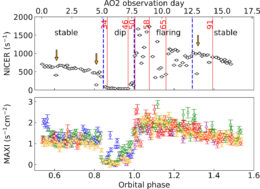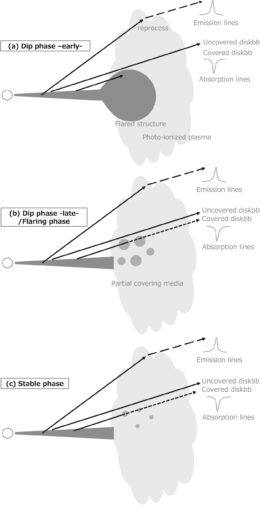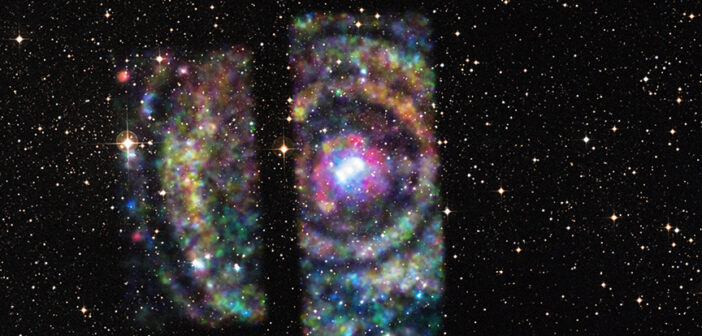New high-cadence observations of Circinus X-1, a binary system containing an extremely young neutron star, have led researchers to propose a unified model for the system’s complicated X-ray emission.
A Young Neutron Star

A composite X-ray, optical, and radio image of Circinus X-1 that shows the surrounding supernova remnant. [X-ray: NASA/CXC/Univ. of Wisconsin-Madison/S.Heinz et al; Optical: DSS; Radio: CSIRO/ATNF/ATCA]
As the neutron star steals material from its binary companion, it results in long-term, orders-of-magnitude changes in the system’s X-ray flux, fleeting bursts, and changes over the course of each orbit. To understand the complex changes that take place in this system over each orbit, a research team led by Mayu Tominaga (Japan Aerospace Exploration Agency and The University of Tokyo) turned to high-cadence X-ray monitoring.

The new high-cadence NICER observations (top panel) show the same phases as the previous lower-cadence data from the Monitor of All-sky X-ray Image (MAXI; bottom panel). Click to enlarge. [Tominaga et al. 2023]
High-Cadence Monitoring
Using the Neutron Star Interior Composition Explorer (NICER), a sensitive X-ray telescope on the International Space Station, Tominaga’s team observed Circinus X-1 roughly every four hours for an entire orbital period, 16.6 days. The object’s light curve over this time shows three distinct phases: stable, dipping, and flaring.
To link these phases to the properties of the binary system, the team modeled spectra from each phase. At first glance, the three phases have completely different spectra, but the team was able to unite the seemingly disparate spectra under a single model in which an accretion disk, emitting light across the electromagnetic spectrum, is periodically blocked by a cloud of neutral gas. Surrounding this whole system is ionized gas.
A Unified Model

Diagram of the model proposed by the authors. Here, “diskbb” is the blackbody emission from the accretion disk. Click to enlarge. [Tominaga et al. 2023]
This picture of how the system’s emission is moderated over the course of its orbit explains nearly all of the NICER spectra of Circinus X-1. Tominaga and collaborators hope that this simple model can be used to explain short- and long-term behaviors of the system in other parts of the electromagnetic spectrum as well.
Citation
“X-ray Spectral Variations of Circinus X-1 Observed with NICER Throughout an Entire Orbital Cycle,” Mayu Tominaga et al 2023 ApJ 958 52. doi:10.3847/1538-4357/ad0034

